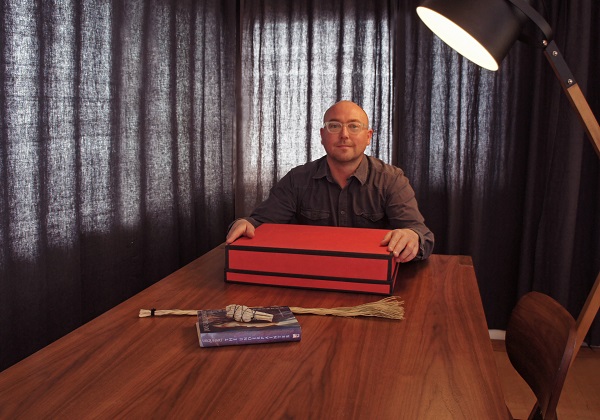Chris Campbell Gardiner uses art to help families grieve the loss of children with disabilities.
Reading time: 2 mins

Parents of children with disabilities face many challenges: providing specialized care; worrying about the child’s safety, health and future; and feeling isolated from the community, with few people to turn to who understand their struggles. When the child passes on, the grief is intense and unending. “The love felt for their children is unmeasurable, and maybe that is because children with life-long disabilities are not valued in our society,” says Elisabeth Scheepers, facilitator of Families Experiencing Exceptional Loss (FEEL), a support group for those mourning the loss of children with disabilities.
Saskatchewan Beach artist Chris Campbell Gardiner has an affinity with these families, as he has a foster son living with complex disabilities. He felt his art practice, which takes objects of anxiety and seals them in vessels, could help them process their grief. Until recently, his practice has focused nearly exclusively on his own anxieties. “I’m not afraid to get naked, to be vulnerable. I’m not afraid to go places where people are afraid to go. I’m attracted to those places. I’m hopeful that it leads people to the belief that healing is possible,” he says.
With support from an Independent Artists grant, Campbell Gardiner is collaborating with four families in the FEEL group to create individualized pieces of art around the loss of their child. “After I told them what I do, there was a sense of hope, a lightness in the room, something they couldn’t give words to or have the poetry to describe. I was offering a simple process for them to engage with,” he says.
He asked the families to provide an object, such as their child’s favourite toy, an autopsy report or another meaningful item, and place it in a small box. Campbell Gardiner covers the box in fabric, stitches it closed and seals it with multiple coats of paint. Only the families know what is contained within. “There is a transformation inside the box, where ideas, feelings and hopes all come together,” he says.
With the permission of the families, Campbell Gardiner would like to show the works in a public gallery to honour the memory of the children. “I want us to give a gift to the public, so they will be able to see how tragic, hard and complex this terrain is.” After the exhibition, he will give the boxes back to the families.
He says the project would not be possible without public funding, as the artwork is not for sale. “I create abstract, non-commercial work. The Saskatchewan Arts Board has been nothing but a constant support for me, like a lighthouse. I’m off, adrift, and I’ve been able to rely on this place to keep my practice afloat.”
Photo: Chris Campbell Gardiner with anxiety-filled box.
Photo courtesy of the artist
